
An Interview with Andrea Scarantino (Dec 2013)
Joe LeDoux is the Henry and Lucy Moses Professor of Science at New York University in the Center for Neural Science, and he directs the Emotional Brain Institute at NYU and the Nathan Kline Institute. His work is focused on the brain mechanisms of memory and emotion and he is the author of The Emotional Brain and Synaptic Self. LeDoux has received a number of awards, including the Karl Spencer Lashley Award from the American Philosophical Society, the Fyssen International Prize in Cognitive Science, Jean Louis Signoret Prize of the IPSEN Foundation, the Santiago Grisolia Prize, the American Psychological Association Distinguished Scientific Contributions Award, the American Psychological Association Donald O. Hebb Award. LeDoux is a Fellow of the American Academy of Arts and Sciences, the New York Academy of Sciences, and the American Association for the Advancement of Science, and a member of the National Academy of Sciences. He is also the lead singer and songwriter in the rock band, The Amygdaloids.
Check out Joe’s twitter and Facebook accounts:
- Twitter: https://twitter.com/LeDouxScience
- Twitter: @theamygdaloid
- Facebook: https://www.facebook.com/joseph.ledoux
-
Lab Facebook Page: https://www.facebook.com/ledoux.lab
-
New Lab Website: www.cns.nyu.edu/ledoux
-
Lab Blog “An Emotional Brain Is a Hard Thing to Tame”: http://ledouxlab.tumblr.com/
You grew up in rural Louisiana. As a child, were you interested in the brain, in science, in animals, or in anything remotely connected to what you do now?
I was the son of a butcher and one of my jobs in the market was to “clean the brains,” which meant get them in an edible state. To do this, I basically had to strip off the meninges (the layers of protective covering) and then find and remove the lead bullet (the animals were stunned by a .22 caliber shot between the eyes, which meant the bullet usually ended up in the brain). So I indirectly learned quite a lot about the physical features of the brain, its texture and shape, especially how some parts are more easily separated than others. On several occasions I also watched cows being shot.
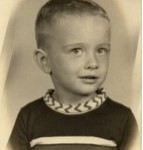
I was taught by Nuns at the time, and had been indoctrinated with a lot of religious ideas, like the notion that people have immortal souls but that when animals die they simply cease to exist. As the bullet penetrated the skull and the cow dropped to the floor, I couldn’t help wondering whether animals might also have souls. Later, I flipped my view and concluded that the whole idea was wrong—that neither people nor animals have immortal souls.
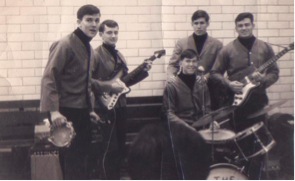
What was your major in college?
I went to college at LSU and majored in marketing, and then got a Masters in marketing as well. But I was enamored with psychology and took classes in that area. I got really into psychology, and especially behaviorism. At one point I wrote to BF Skinner at Harvard, and his response about my interest in the intersection of psychology and marketing made me realize I wanted to do psychology. A pivotal class for me was “The Psychology of Learning and Motivation”. It was taught by Robert (Bob) Thompson, a physiological psychologist who had worked briefly with Karl Lashley, the father of the field concerned with studies of brain and behavior. Bob Thompson was trying to do what Lashely couldn’t—localize learning and memory in the brain.
He had a great idea—study lots of different learning and memory tasks with different behavioral requirements and make lesions in lots of brain areas. Areas implicated in all tasks would constitute the core of the brain’s learning and memory system. I worked in his lab in my spare time while completing my Master’s Thesis on consumer protection issues, and decided that physiological psychology was the area of psychology I wanted to pursue. With Bob’s help, I was accepted into grad school at SUNY Stony Brook.
At SUNY Stony Brook in the 1970s, you did your PhD work on split-brain patients with Mike Gazzaniga. Has this early work had an influence on your future research and if so how?

My work with Gazzaniga was extremely influential in many ways. Mike and I spent a lot of time on the road together. The patients we were testing were mostly in Vermont and New Hampshire, as the surgeon doing the split-brain operations was at Dartmouth. So once a month we’d travel up there for a 3 or 4 night stay. After the day’s work was done, we’d end up discussing the findings in a bar. By the second drink we were talking about philosophy of science.
He believed in the big questions. When I suggested I wanted to learn to do some biochemistry, he said, “Why would do that? You can hire a biochemist if you have a good question you want to answer with that kind of methodology.” By the third drink we were into philosophy of life. It was a great time.
How did you come to study emotion in the brain at a time in which the emotions were not really at the forefront of neurobiological research?
The big question Gazzaniga and I were pursuing at the time was the idea of consciousness as a means of making sense of one’s life. This came out of an observation that Gazzaniga made while I was testing one of the patients. We showed the separated hemispheres different pictures and then put out a bunch of cards with additional pictures on them and the task was to point to the card that was somehow related to what was seen. In the key study, the left hemisphere saw a chicken and the right a snow scene. The right hand then pointed to a chicken claw and the left hand to a shovel. When asked to explain his choices, the patient (actually his left hemisphere) said, “I saw a chicken so I picked the chicken claw and you need a shovel to clean out the chicken shed.” The shovel part was a total confabulation that was filled in by the left hemisphere to make sense of why the left hand (right hemisphere) had chosen the shovel. Gazzaniga speculated that we all do this all the time.
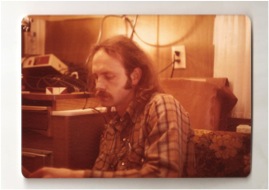
Behaviors come out of our brains for reasons that we are not consciously privy to and we interpret those in such a way as to create a coherent story about our life in the here and now that makes sense in terms of our past and future. Mike went on to focus on the nature of consciousness and I turned instead to how the emotions work unconsciously. From Bob Thompson, I had gotten interested in emotion and motivation in relation to memory and found a way to explore this in the split-brain setting. This interested Mike as well since he had also developed an interest in emotion and motivation, in part through his friendship with the social psychologists, Leon Festinger, “Mr. Cognitive Dissonance,” and Stanley Schachter, who brought emotion into cognitive psychology. I designed a study where we put emotional stimuli in the right hemisphere of a split-brain patient. The left hemisphere couldn’t say what the stimulus was but could rate its emotional valence on a 5-point scale from good to bad. Somehow emotional meaning of the stimulus was processed separately from perceptual object in the brain.
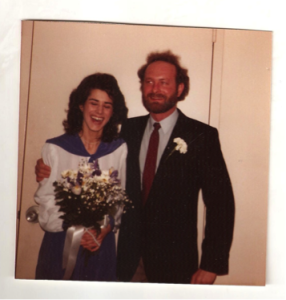
Over drinks, Mike said, “You know, there’s not much work on emotion these days”. A light went off in my head and I said that’s going to be my topic, the place where I get my big question. And the question I started with was, “How does emotion get processed separately from cognition in the brain?” In retrospect it was a naïve question but it got me into emotion. I decided to return to rats since there were no good ways to study the human brain in much detail at the time. I spent 12 years working at Cornell Medical School in Don Reis’ neurobiology lab, where I had the opportunity to learn lots of different techniques. This helped me enormously as I began to ask questions about how emotional stimuli are processed in the rat brain.
In 1996, your book The Emotional Brain (Simon and Schuster) was published to wide acclaim. One of its central themes is that emotions and feelings should be distinguished. I know your views have changed to some extent since then, but why did you think at the time that brain science required emotion and feeling to be distinguished?
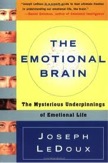
I was steeped in the ideas of cognitive science when I was doing the split-brain work. And one thing I was really impressed with was the fact that cognitive science had found a way to study the mind without having to solve the mind-body problem, the consciousness problem that the behaviorists had eschewed and gotten rid of. The cognitive mind was not a place were experiences occur so much as a place where information is processed. That processing might lead to conscious experience, but the processing was where the action was. As Lashley had pointed out, we are never consciously aware of processing; we are only aware of the content created by that processing. When I turned to emotion I was surprised at how little this logic was being used in psychology or neuroscience.
The neuroscience of perception had smoothly transitioned from the behaviorist to the cognitive approach. Great progress was being made in understanding how the brain processes the color red in the act of seeing without having to first understand how the brain experiences the color red in a sunset. Emotions, though, continued to be thought of as the content of subjective states—conscious feelings. For example, animal researchers studying circuits that controlled behavioral and autonomic responses often claimed to be locating where feelings of fear, anger, pleasure, and so forth occur in the brain.
I felt there were logical and conceptual problems with the subjective approach to emotions in animals that could be overcome by applying the ideas of cognitive science to emotion. We could study the way the brain detects and responds to threats, for example, without having to address the problem of how the brain creates subjective content—the feeling of fear. Threat detection and conscious feelings seemed like different things. I thought that surely they interacted, but that maybe more progress could be made by studying them separately. I laid this all out in a book chapter in 1984 and then proceeded to apply this logic to the study of Pavlovian fear conditioning in the brains of rats.
By the time I started writing The Emotional Brain in the mid 1990s, research that I and others were doing had made quite a lot of progress in understanding how the brain learns about, stores, and then later detects and responds to conditioned stimuli—tones that had acquired threat value by paired with shocks. I saw no need to bring the feeling of fear into this process, especially since I was particularly interested in how the brain rapidly detects and responds to threats before one can consciously know the threat exists.

At the same time, I did continue to have a lingering interest in consciousness from my split-brain days, and did want to know how we might become consciously aware that our brain was responding unconsciously to an emotional stimulus and might also feel the emotion. I believed that the way to go was to assume that we become conscious of emotional stimuli the same way we become conscious of anything else. Mounting evidence indicated that conscious awareness of sensory stimuli occurs when attention directs information about a stimulus and retrieves long-term memories into the temporary mental workspace called working memory. So it seemed to me that feelings might come about when the unconscious consequences of emotional arousal come together with sensory and memory information in working memory, thus creating a conscious emotional experience.
This is a long answer to why I felt we needed to distinguish between unconscious processes that detect and respond to emotional stimuli, and conscious feelings that are cognitively assembled via working memory. The terms emotion and feeling seemed like they could capture that difference. But I no longer believe that these the terms should be used that way.
To understand how your thoughts on the matter have evolved, a useful starting point is your recent piece on Neuron entitled “Rethinking the Emotional Brain”. In this article you introduce the notion of survival circuits, and argue that these should take center stage in affective science. What are survival circuits, and why should brain science focus on them?
 The emotion/feeling distinction was useful but always sort of bothered me. It required that the term “emotion” be used in a confusing way scientifically. For most people, emotion and feeling are synonymous. When scientists redefine common language terms to mean something other than the received meaning, they invite confusion. For a number of years, I had a folder on my computer called “Neuron Emotion.” I wanted to lay out my ideas in one of the most prestigious neuroscience journals to make an impact. But I couldn’t find the right way to frame the topic. Eventually, though, I figured out what I wanted to say, and Neuron published it. One of the things that had been bothering me was the idea that emotions are hard-wired in the brain. The emotion/feeling distinction allowed for specific forms of emotional processing to be hard-wired without requiring that the feelings be hard-wired. But many scientists and lay people kept assuming that when I talked about hard-wired circuits I was referring to hard-wired feelings.
The emotion/feeling distinction was useful but always sort of bothered me. It required that the term “emotion” be used in a confusing way scientifically. For most people, emotion and feeling are synonymous. When scientists redefine common language terms to mean something other than the received meaning, they invite confusion. For a number of years, I had a folder on my computer called “Neuron Emotion.” I wanted to lay out my ideas in one of the most prestigious neuroscience journals to make an impact. But I couldn’t find the right way to frame the topic. Eventually, though, I figured out what I wanted to say, and Neuron published it. One of the things that had been bothering me was the idea that emotions are hard-wired in the brain. The emotion/feeling distinction allowed for specific forms of emotional processing to be hard-wired without requiring that the feelings be hard-wired. But many scientists and lay people kept assuming that when I talked about hard-wired circuits I was referring to hard-wired feelings.
Further complicating things was the fact that some scientists also assumed that feelings are hard-wired. And I was often taken to be part of that group. As long as you talk about emotion, most people will assume you are talking about feelings. (As an aside, even though the circuits involved control hard-wired responses, they are plastic and can come to be controlled by novel stimuli through learning, which is what happens in Pavlovian conditioning). Another thing that was bothering me about using the word emotion to describe unconscious processes that detect and respond to stimuli was that it sort of implies that the reason that the brain systems underlying these processes evolved is to make this thing called emotion. But if you start to look at this from the evolutionary point of view you quickly go back very far in phylogenetic history. Research in birds and reptiles had implicated the same circuits in “fear conditioning” that I had been studying in rats. And even though invertebrates have very different kinds of circuits than vertebrates, many of the molecules that have been shown to underlie “fear conditioning” in mammals and other vertebrates were first discovered through studies of Pavlovian conditioning in flies and snails.
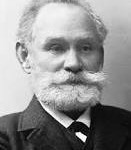
The conclusion of all this seemed to me to be that defense against danger is a key survival function. Each species has its own defensive survival circuit. And although the circuits differ drastically between vertebrates and invertebrates, the function is the same, and it is most likely encoded in the genome. But once you get to this point in the argument, you are compelled to ask whether that is as far as you need to go. I came across a study on bacteria that answered this question. Bacteria can also detect and flee from danger. They do this without a nervous system. Maybe this capacity to detect and respond to danger is not strictly a feature of animals (as opposed to single cell organisms), and not a feature that requires a nervous system. Maybe it is simply part of what it takes to be a living organism. And if defense is a feature of life, maybe other survival functions are as well. In order to persist as individuals and as a species, single cell organisms, like complex animals, not only have to detect and respond to danger, they also have to get nutrients and energy sources into the cell, balance their fluids, thermoregulate, and reproduce. Each of these functions can be a source of a consciously experienced feeling, an emotion, in a human (and maybe other animals, but who knows). Yet, the functions did not evolve to make feelings.
They evolved as tools to help survive daily life by interacting behaviorally with the environment. Survival functions can thus be studied in all living organisms on a level playing field. We should only bring in feelings in organisms in which we can verify feelings. It’s not uncommon for feelings to be called upon to explain things in animals when they are not required to explain things in humans, the only species in which we can really verify feelings. For example, people can be conditioned to a stimulus and respond to it unconsciously and without any feeling. The amygdala is active and required to detect and respond to the stimulus but this activity is uncoupled from feelings. If feelings do not occur when “emotional” stimuli elicit “emotional” responses controlled by the amygdala in humans, we should not use “emotional” responses or amygdala activity in animals to tell us about feelings in people or animals.
How is your position different from that of basic emotion theorists, who have long characterized basic emotions as solutions to evolutionary problems?
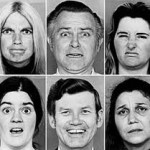
My research has long been thought to support basic emotion theory. I once thought this way too. But now I see my work as being very different. Basic emotion theories typically follow Darwin’s view that emotions are “states of mind” that have been inherited from animal ancestors and can be tracked by using behavior expressions (of the face or body) or physiological responses. Many focus on the responses, but implicitly, or in some cases, explicitly, there it the assumption that the same circuit that responds to “emotional” stimuli also gives rise to the feeling. I reject this because feelings and responses elicited by an “emotional” stimulus can be dissociated.
How do we get from the activation of a survival circuit to a feeling? And what do feelings add to the capabilities of the organism, if the survival circuit is capable of eliciting adaptive responses in the absence of feelings?
Let’s use defense as an example. A threatening stimulus (whether learned or innate) will activate a defense circuit. [By the way, there is not one defense circuit. There are many. Threatening sounds activate different circuits from threatening smells, and these differ from threatening tastes.] Once a defense circuit is active, a defensive motivational state emerges. This is an unconscious state that that monopolizes the brain’s resources (other motivations are suppressed) and coordinates sensory and motor systems. Brain arousal increases, facilitating vigilance. The brain also becomes supersensitive to threat-related stimuli and defense responses are potentiated. Attention can be directed to the responses that are being performed and their environmental consequences, and also to visceral feedback from the responses. As working memory begins to add information about this defensive motivational state to the sensory and memory representations (by monitoring behavior or other bodily responses), and integrate these into a unified experience, a feeling of fear begins to emerge. At this point, the feeling becomes part of the organism’s decision tree and can influence subsequent behavioral responses that are considerably more complex and flexible than those triggered automatically as part of the defensive motivational state.
You want to be neutral on whether animals have feelings. But you also want to use animal studies to shed light on human feelings. Are you trying to have your cake and eat it too?
Unconscious defensive motivational states are conserved across species. Because these contribute to feelings of fear in conscious organisms, understanding their function in animals helps us understand how human feelings come about regardless of whether the animal experiences the feeling. Many (all?) animals have defensive motivational states. Only animals that can represent these in consciousness can feel an emotion. This approach allows us to study brain states that are elicited by threats in an effort to understand pathological fear and anxiety. People with anxiety and other emotional disorders feel bad. And a big part of this feeling is being driven from bottom-up processes coming from the defensive motivational state that make their way into working memory and influence what they feel.
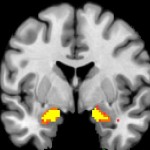 Do you think fMRI studies are a suitable tool for the study of brain function in affective phenomena?
Do you think fMRI studies are a suitable tool for the study of brain function in affective phenomena?
I do think fMRI is a valuable resource. It is especially valuable in two ways. One is in verifying that processes uncovered in animals apply to the human brain. My colleague Liz Phelps has done a tremendous service to the field by painstakingly pursuing this. But the other is that it allows studies of the unique capacities of the human brain. Is fMRI as precise as we would like it to be? No. But it is still valuable, and for those who recognize its limits and work within these, and interpret their results accordingly, it is a terrific tool.
The emotion that you have studied the most is fear, or what you now call the defense survival system. Why did you pick fear? And what is your current understanding of what fear is?
Fear is a conscious experience that occurs when one is in danger. But there is no one thing that the word fear refers to. Fear of a snake at your feet is different from fear of public speaking or taking a test, or of sexual failure, of falling in love, or of starving or freezing to death, of the eventuality of death, or of fear itself. I like to think of emotions like fear as emerging the way the flavor of a soup emerges from its ingredients.
Salt, pepper, garlic, and water are common ingredients that go into a chicken soup. The amount of salt and pepper can intensify the taste without radically changing the nature of the soup. You can add other ingredients, like celery, carrots and/or tomatoes, and still have variant of a chicken soup. Add roux and it becomes gumbo, while curry paste pushes it in a different direction. Substitute shrimp for chicken in any variant and the character again changes. None of these are soup ingredients per se. They are things that exist independent of soup, and that would exist if a soup had never been made. Emotional feelings are like this. They emerge from non-emotional ingredients. Specifically, they emerge from the coalescing of non-emotional neural ingredients in consciousness. The particular ingredients, and the amount of each, define the character of the feeling. Many of the non-emotional neural ingredients that contribute to the feeling of fear are amygdala-triggered consequences that occur as part of the unconscious defensive motivational state: body responses and brain arousal, direct input from the amygdala to cortical areas, feedback from body responses to the brain (including to the amygdala, cortical areas and arousal systems), initiation of goal-directed behaviors that produce additional feedback, and so on.
 When information about these various activities coalesces in consciousness with information about the external stimulus and long-term memories about what that stimulus means, then the resulting feeling that emerges is some variant of fear. Whether we feel concerned, scared, terrified, alarmed, or panicked depends on the particular characteristics of the internal factors aroused in the brain and factors from the body, and information about the stimulus and its context. In the presence of these neural ingredients, feelings occur automatically in consciousness, similar to the way the essence of a soup emerges from its ingredients. But “automatic” does not mean “without cognition”. Unconscious cognitive factors involved in attention, monitoring, information integration, and so on contribute to the conscious state that emerges. Motive states are created from general-purpose mechanisms but the resulting state is specific to the motivational demands of the moment. A defensive motive state is different from a reproductive (sexual) motive state. And even within a category, the nature of the motive state can vary considerably (scared vs. panicked) depending on the circumstances. It is important to point out that some feelings do not depend on unconscious motive state ingredients. Many human feelings are like this—for example, compassion, pride and shame. These so-called social emotions are primarily based on cognitive assessment of one’s circumstances. While emotions resulting from motive states emerge in consciousness in a bottom-up fashion, social emotions are built from cognitive processes in top-down fashion.
When information about these various activities coalesces in consciousness with information about the external stimulus and long-term memories about what that stimulus means, then the resulting feeling that emerges is some variant of fear. Whether we feel concerned, scared, terrified, alarmed, or panicked depends on the particular characteristics of the internal factors aroused in the brain and factors from the body, and information about the stimulus and its context. In the presence of these neural ingredients, feelings occur automatically in consciousness, similar to the way the essence of a soup emerges from its ingredients. But “automatic” does not mean “without cognition”. Unconscious cognitive factors involved in attention, monitoring, information integration, and so on contribute to the conscious state that emerges. Motive states are created from general-purpose mechanisms but the resulting state is specific to the motivational demands of the moment. A defensive motive state is different from a reproductive (sexual) motive state. And even within a category, the nature of the motive state can vary considerably (scared vs. panicked) depending on the circumstances. It is important to point out that some feelings do not depend on unconscious motive state ingredients. Many human feelings are like this—for example, compassion, pride and shame. These so-called social emotions are primarily based on cognitive assessment of one’s circumstances. While emotions resulting from motive states emerge in consciousness in a bottom-up fashion, social emotions are built from cognitive processes in top-down fashion.![]()
While fear is a prototypical bottom-up emotion, it can also arise from top-down influences. We can think our way into fear, and activate a defensive motives state this way. But in addition we can have intellectual fears, such as the fear of our eventual death, that depend on top-down processes rather than simply emerging bottom-up from motive states. The enormous complexity in the various conscious manifestations of fear suggests that there is no one thing that the term fear refers to, and certainly there is no fear module in the brain that is responsible for all of the states to which we apply the label fear. Psychologists like Lisa Barrett and Jim Russell have made this point as well, emphasizing that emotions are psychological constructions built from non-emotional processes. Fear, the conscious feeling of being afraid, is what happens when we are aware that certain ingredients have come together to compel a certain interpretation of the state we are in. Anxiety, that worry or apprehension one has when dwelling on the past and/or anticipating the future, is a variation on this theme. The same holds of other emotions as well. In order to understand emotions we thus need to understand consciousness.
You famously described a “low” road to fear that projects along a subcortical pathway directly to the amygdala, and a “high” road to fear that projects to the amygdala indirectly through the sensory cortex. Do you think this dual pathway idea captures a deep truth about what emotions are, or is it likely to only be found in fear?
The fact is, triggering events for emotions often involve unconscious detection processes, whether we are talking about fear, joy, sadness, pride, or whatever. The emotion is a conscious experience, a feeling, but it is jump-started unconsciously. The low road/high road idea made that easy to understand. But it also led to what I now see as an inaccurate view of the high road. It now seems clear that both thalamic and cortical inputs to the amygdala are unconscious processing channels. Just because the visual cortical areas that project to the amygdala (via the high road) can be part of visual conscious experience by virtue of connections with prefrontal and parietal circuits that contribute to attention, working memory, and consciousness, does not mean that the high road consciously activates the amygdala.
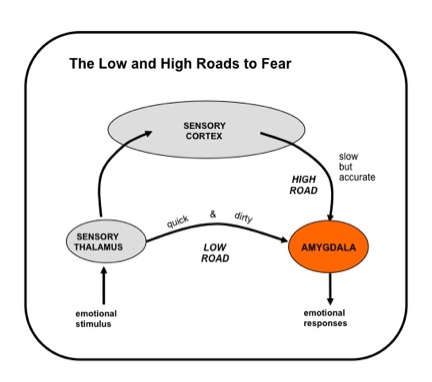
More generally, do you think the neural basis of fear is a good model for understanding the neural basis of other emotions such as, say, shame and embarrassment? And do you think all emotions have a dedicated neural basis?
I do not think fear has a dedicated neural basis, a module, that gives rise to the feeling of fear. As I said above, fear, in my view, is a conscious experience that comes about like any other conscious experience—by representation of unconscious ingredients in working memory circuits (broadly defined to include multiple lateral and medial prefrontal regions parietal attention networks). It just has ingredients that non-emotional experiences don’t have. And different forms of fear, as discussed above, will themselves have different ingredients. If this view of fear is right, it would probably be useful in understanding other emotions, but not because the feeling of fear or any other emotion has a dedicated neural system.
Lots of mental disorders are disorders of the fear response. How is your neurobiological understanding of fear affecting the way you think of therapy for fear disorders? Are we getting any closer to finding a cure for phobias or PTSDs or social anxiety or panic disorders?
Research on the neural basis of “fear” has been really successful because of the availability of simple paradigms that are amenable to neural circuit analysis. For example in so-called fear conditioning, a specific stimulus comes to elicit an innate defense response. One can thus connect the dots in the brain between stimulus and response and identify the circuit. But studies of anxiety, depression, and other disorders typically do not have this kind of stimulus-response luxury, making them much harder to pin down. So we’ve learned a lot about threat pathways. But this leads to two problems.
One problem is that fear conditioning has sometimes been thought of as the way to study all things fear (and sometimes, all things related to emotion) in the brain. This is partly my fault since The Emotional Brain was mostly about “fear” research. Fear conditioning is good for exploring stimulus driven aspects of “fear,” and thus is useful for studying the underlying states that occur when a phobic patient encounters their phobic stimulus, or when a PTSD patient is exposed to trauma-related cues. It is less useful for conditions like generalized anxiety where there is no specific stimulus involved.
The other problem is one that I’ve been hinting at throughout the interview. The circuits that detect and respond to conditioned threats are not the circuits that themselves give rise to a feeling of fear elicited by such stimuli. Problems arise when these two things are confused. For example, there was much surprise in the press when a patient with amygdala damage was found to be able to experience panic induced by breathing CO2. The only reason you would be surprised is if you believe that feelings of fear (and panic) flow out of the amygdala.
In a landmark experiment in rats, you showed that it’s possible to erase the memory of a specific traumatic event without affecting other memories. How did you do that and what do you take to be the implications of this discovery for humans? Do you think we will ever be able to remove memories of specific traumatic events?
In 2000, Karim Nader, Glenn Schafe, and I published a paper that re-ignited interest in a topic that had been fairly dormant for a while. This was reconsolidation, the idea that memories become subject to change during retrieval, allowing the memory to be updated. Because it is a new memory, it has to be re-stored or reconsolidated. Much work has been done on this since. Jacek Debeic, Valerie Doyere and others in the lab showed that very specific memories could be deleted. And much has been learned about the molecular mechanisms as well. Reconsolidation has important implications for the therapy of anxiety disorders since unlike exposure (extinction) therapy the threat memory does not readily recover over time or in the presence of triggers. But Marie Monfils and I later found that extinction could be made more permanent if it was done after a single retrieval trial. The details are too complicated to explain, but in brief the idea is that if you retrieve the threat memory and then wait 10-60 min before starting a series of extinction trials then extinction is more enduring. Daniela Schiller, Liz Phelps and I then showed it works in humans in the lab. The big question is whether it will work in the clinic.
Your interest in memory is on full display in another one of your bestselling books –Synaptic Self (Viking, 2002) – where you argue that memory plays a central role in making us who we are. What exactly is the Synaptic Self, and why do you think that the Self and memory are so intimately related?
A key way that behavioral information and other kinds of information are encoded in the brain is by way of synaptic connections within and between networks.

Some behavioral tendencies are encoded innately (genetically and epigenetically) and others through experience. These are both memories. In one case they are species memories, and in the other they are individual memories. In both cases, the memory is stored via synaptic connections. From the point of view of mind and behavior, then, nature and nurture are not two different things, but two ways of doing the same thing: wiring synapses.
This is relevant to the self because in order to be the same person from moment to moment, day to day and year to year, our brain has to remember who we are. I am not just referring to memory in the conscious sense of explicit, declarative memory, but also to the many forms of implicit or unconscious memory that we have. There is much more to the self than meets the mind’s eye. Much of the self is stored in systems that operate unconsciously. All your traits and habits, for example– tendencies to act in a certain way in a certain situation.
When we are self-aware, this comes about in one of two ways. We can access those aspects of our self that are stored in conscious or explicit memory. But we can also monitor the behavioral and bodily manifestations of implicit processes and learn about ourselves this way. As I described above, this was one of the main conclusions that came out of my PhD thesis work with Mike Gazzaniga, and it became the basis of Gazzaniga’s own interpreter theory of consciousness.
What do you consider to be your most significant contributions to the study of emotion?
One important contribution was to help get emotion back into the limelight in neuroscience. At the time, cognition was the rage and emotion was on the back burner. When I submitted my first grant on emotion, it was rejected. The review said one can’t study emotion in the brain; emotion is too subjective. But that’s just what I had been saying. I had a way to study emotion without wrestling with the subjective part. Just study the unconscious processing of the stimulus as it controls the response. The reviewer didn’t get it. But I retitled the grant to be about the neural basis of conditioning rather than the neural basis of emotion, added some conditioning control groups, and got funded.
The review was wrong-headed but it had an important consequence. It got me funded to do what I wanted to do. And it led me to see my work in terms of emotional learning and memory. The idea of implicit (unconscious memory) was just taking off in cognitive science, and my ideas helped make emotional memory one of the key unconscious memory processes. There were many researchers studying learning and memory using various shock paradigms, but they tended to be more into the memory than the emotion part. The idea of emotional memory was a good branding strategy (maybe those two marketing degrees paid off). While this strategy certainly helped my career, it also helped get the field going.
One could say that I sold out–that I should have stuck with emotion as emotion. But I don’t view it this way. Learning plays an important role in what drives emotional feelings. So by studying how threats are learned about and stored is very important. I have no regrets with the way I ended up pursuing things. I am happy with the approach I took and the progress I made using it.
I guess another contribution was to provide an anatomical framework for understanding how emotion could be thought of in terms of unconscious brain processes. Some initially thought this meant the Freudian dynamic unconscious (a storehouse of repressed conscious information). But I was thinking of it the way cognitive science was—as information processing that is unconscious by virtue of wiring. This framework paved the way for me to trace the pathways that allow unconscious processing from stimulus to response in the brain, and, as just mentioned, to study unconscious learning and memory.
I’ve also had two crusades in my career that I am happy I pursued. One was the attempt to take down the limbic system theory of emotion. I’ve been trying to do this since the late 1980s. The limbic system idea is a compelling idea that lacks empirical support. I’m not sure I’ve gotten very far in this crusade but I think it’s important because scientists use this idea in an explanatory way. But it’s a house of cards. I’ve summarized the arguments in numerous places, including The Emotional Brain and Synaptic Self. The other crusade, which we already discussed, is about the imprecise ways we use emotion terms like fear. This too, I think, is important to pursue. Scientists have an obligation to be precise in their thinking and terminology. Otherwise, data are interpreted in confusing ways and the field does not progress. And lay people and journalists get the wrong idea. Scientists then start using the lay meaning, closing the circle of confusion. The limbic system theory and the way we talk about emotions are both examples of imprecise interpretations that lead to confusion that could be avoided by being a little more careful. I know that both crusades are uphill battles. But I’m committed.
You are from Eunice, deep in Cajun country. What are your favorite dishes from there? Do you have a family recipe to share?
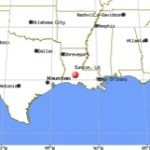
When the air turns chilly from a north wind, I get a craving for gumbo and usually time the fall gumbo with a big LSU football game. This takes lots of planning since it requires that I first order a shipment of Louisiana smoked sausage and tasso from CajunGrocer.com. The smoked meats are not as good as the ones my father used to make in his meat market (Boo’s Market) but they are essential (in a pinch, I sometimes bicycle from my apartment in Williamsburg to Greenpoint and pick up some double smoked kielbasa from the Driggs Avenue Polish market, but I prefer the Louisiana stuff). I also order some hot boudin for an appetizer (pork is the best, but sometimes I get the pork/alligator combo). A few days before the game, I start the process, since gumbo (like a lot of other food) is better after it consolidates its flavor. First thing is you have to make a roux. I used to do this the old fashion stove top way, which takes forever. Then I found a microwave version that does the trick in 30 min. Mix one cup of flour and one cup of vegetable oil. Put in microwave. Cook for 3 min. Stir. Repeat until the roux starts to turn brown. Stir more often once it is brown. Continue until it has the dark brown color of a Hershey’s chocolate bar (closer to dark than milk chocolate though). Stir, stir, stir. Do not let it burn. If you have little black flecks in it, you’ve burned it. Start over. Once you have a roux, fill a gumbo pot (a big soup pot) half way with water and bring to a boil. Put in the roux and stir. When dissolved, boil for 30 min. In the meantime, chop a large onion, bell pepper, and lots of garlic. Throw them in at 30 min. Lots of salt, black and red pepper. Add cut up chicken, 2 sticks of sausage, and 1 stick of taso (not essential). Cook until the chicken is tender.

Let cool. Put in the fridge for a day or two. On the day of the game, remove from fridge and simmer until hot. Eat some boudin with a cold beer during the first half. Add scallion tops (the green part) and parsley. At half-time, serve over white rice with Tabasco sauce on the table. More beer to wash it down. Having 2 servings is unavoidable. But going for the third is probably a mistake, unless the game is going poorly and you are feeling sorry for yourself. The next morning, be sure to have some boudin with an ice-cold beer (but Coca Cola will also do just fine since it is breakfast). You should still have some gumbo left for lunch. And if you have more of the sauce left, but find the chicken to be depleted, pick up a pound of Gulf shrimp and throw them in for dinner. Oh, be sure to have some Alka Selzer on hand.
You now live in New York City, where you are a member of the Center for Neural Science at New York University. What are some of your favorite things do to in the city? And are you willing to share the names of your three favorite restaurants in New York?
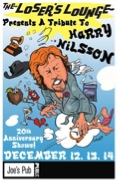 New York is a great place to live and work. I love going out to hear music. One of my favs is something called Losers Lounge. It happens once every few months at Joe’s Pub, which is near NYU (no, I’m not that Joe). The head honcho of Loser’s Lounge is Joe McGinty (he’s not the Joe of Joe’s pub either). He picks a theme (Neil Young, Supremes, Pince, John Lennon) and his band does the songs note for note. Each song is sung by a different New York singer. It sounds corny but it is a fabulous event. You get to learn a lot about different musicians around town by watching these shows. It’s also fun going to various small, dark, dank clubs that have the aroma of years old stale beer infused in the floor and walls. My wife is in the art world, so we do a lot of stuff connected to that as well. In terms of favorite restaurants, it’s hard to pin that down. In Williamsburg, where we live, Aurora is terrific. For a pretty simple but really tasty Mediterranian meal, we like Café Mogador. In Manhattan, there are of course endless choices in all price ranges. We used to live in Chelsea, and Suenos was our go to place for a Yucatan dining experience.
New York is a great place to live and work. I love going out to hear music. One of my favs is something called Losers Lounge. It happens once every few months at Joe’s Pub, which is near NYU (no, I’m not that Joe). The head honcho of Loser’s Lounge is Joe McGinty (he’s not the Joe of Joe’s pub either). He picks a theme (Neil Young, Supremes, Pince, John Lennon) and his band does the songs note for note. Each song is sung by a different New York singer. It sounds corny but it is a fabulous event. You get to learn a lot about different musicians around town by watching these shows. It’s also fun going to various small, dark, dank clubs that have the aroma of years old stale beer infused in the floor and walls. My wife is in the art world, so we do a lot of stuff connected to that as well. In terms of favorite restaurants, it’s hard to pin that down. In Williamsburg, where we live, Aurora is terrific. For a pretty simple but really tasty Mediterranian meal, we like Café Mogador. In Manhattan, there are of course endless choices in all price ranges. We used to live in Chelsea, and Suenos was our go to place for a Yucatan dining experience.
I know you are working on a new book. What is its title, when will it be out and what is it going to be about?
It’s going to be called “Anxious.” Not surprisingly, it will be about fear and anxiety, viewed from my new perspective on emotion. I hope to be done by May 2014, and have it in print, winter 2015.
Please list a handful of articles or books that have had a deep influence on your thinking.
Skinner BF (1938) The behavior of organisms: An experimental analysis. New York: Appleton-Century-Crofts.
Geschwind N (1965) The disconnexion syndromes in animals and man. Part I. Brain 88:237-294.
Kandel ER, Spencer WA (1968) Cellular neurophysiological approaches to the study of learning. Physiological Reviews 48:65-134
MacLean PD (1949) Psychosomatic disease and the “visceral brain”: Recent developments Bearing on the Papez theory of emotion. Psychosomatic Medicine 11: 338-353.
Nauta WJH, Karten HJ (1970) A general profile of the vertebrate brain, with sidelights on the ancestry of cerebral cortex. In: The Neurosciences: Second Study Program (Schmitt FO, ed), pp 7-26. New York: The Rockefeller University Press.
Jackendoff R (1987) Consciousness and the Computational Mind. Cambridge: Bradford Books, MIT Press.
You were recently elected to the National Academy of Sciences, a very exclusive club of highly distinguished scientists. If you were to give some (free!) career advice to young scientists, what would that be?
If you don’t love what you are doing, do something else. It’s usually a long road from grad school to a successful career. And you are more likely to get there if you’re doing something you want to do. But I guess the other thing that needs saying is that it’s important to remember that you are more than your career. Don’t completely ignore the other aspects of your life to get ahead at work.

You are the front man of New York’s most famous band named for a part of the brain: The Amygdaloids. Are the Amygdaloids part of a master plan to make neuroscience popular or do you just like music? Where can we listen to some of Amygdaloids’ songs?
Well I guess it’s good to be the most famous anything in NY. I have always been strongly drawn to music. I love making it and playing it, and hearing it. It’s an amazing experience when several people get together and start playing a song and then it magically transcends the individuals and becomes an entity on its own.
There’s really nothing quite like it. That doesn’t happen all the time, but when it does, it’s wonderful. So ultimately that’s why I do it. But at some point I figured out I could mesh my love of music with my passion for understanding the brain. So I started writing songs about mind and brain and mental disorders. We call our music Heavy Mental, which the title of our first CD. We’ve recorded 3 CDs, with some new recording in progress now. Our second CD, Theory of My Mind, feature Rosanne Cash on backing vocals on two songs. Our music can be heard at through our website: www.amygdaloids.com. Below are a couple of music videos:
Note: if you are interested in listening to The Amygdaloids‘ new songs, please send an email to amygdaloids.freesongs@gmail.com to obtain a download code.
Also, I’ve been involved in a video series called “My Mind’s Eye” that blends music with scientific interviews. Each interview is themed around an Amygdaloid’s song about mind and brain. These are being hosted by Scientific American. The first one was with Ned Block and can be seen below:
http://blogs.scientificamerican.com/observations/2013/01/28/what-is-consciousness-go-to-the-video/
Since you compose music, I wonder if you have any views on how the creative process of a musician compares with the creative process of a neuroscientist. Is writing music with someone else a bit like co-authoring a paper?
I find the creative process of composing music to be pretty different from science. It takes so long for ideas in science to be materialized in experiments. But when things go well I can sit down and crank out a song in a few hours. But you have to figure in that I am hardly a pro when it comes to music and song writing. But collaborative writing of a song is not that different from collaborating on a scientific paper.
What do you think is the main question that future affective neuroscience should be focusing on?
I’m not a fan of the term affective science. I think we should throw out terms like affective and cognitive science. It was useful to have the designation cognitive science to help launch an approach that differed from behaviorism. Cognitive science then become so dominant that affective science was needed to carve out a research area. But ultimately what we care about is how mind and behavior come out of the brain. I think we are ready to do away with these artificial distinctions and just study mind, brain and behavior without putting research or researchers in tracks that limit what they do and how they do it.





Dear Editor,
Thank you very much for this blog, Very interesting indeed.
I would like to ask you for few things:
1. To put dates of articles, interviews and so on. For example your interview with Prof. LeDoux – which year is it?
2. To put to discussions some different views like that of Luiz Pessoa.
3. From my personal field of interests and occupation I would be very glad to see connection between emotions, memory, reflexes and motion or movement, especially with what I call Natural Motion (I have a definition of this term in my blog).
Thank you very much,
Monya